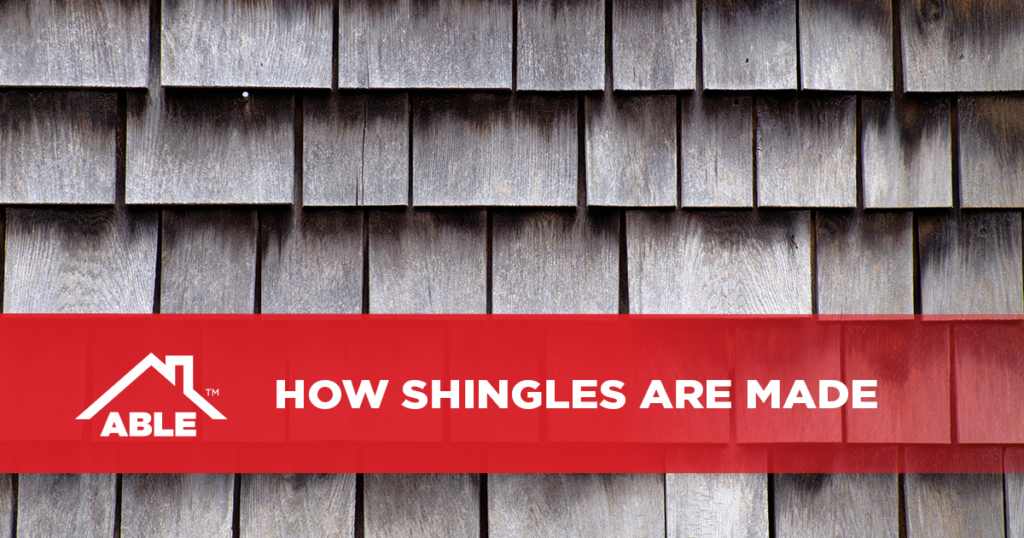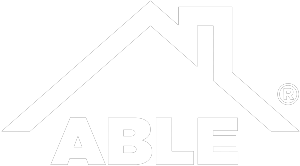Shingles are one of the most popular roofing materials in North America. They are durable, easy to install, and relatively inexpensive. The value they offer to the overall home and roof has made them a go-to choice for homeowners and roofing contractors alike. But how are shingles made? The process of making shingles and the materials used to make them have evolved greatly over time. It is a fascinating process that starts with taking raw materials and turning them into finished products.
The history of shingles
Shingles have been used for centuries as a roofing material, and the first shingles were made of wood in the colonial 1700s. These wooden shingles were thin pieces of wood that were cut into rectangular shapes. They were then nailed to the roof in overlapping rows. This method of installation is still used today, but with significant improvements.
The first major improvement to wooden shingles came in the form of asphalt-coated shingles. This type of shingle was first introduced in the late 19th century and quickly became the standard for roofing in North America. Asphalt-coated shingles are made of a base material that is coated with asphalt. This coating makes the shingles waterproof and much more durable than their uncoated counterparts.
Raw materials
Asphalt-coated shingles are otherwise known as composition shingles. They are made of a base material that is coated with asphalt. This base material can be either organic or inorganic. Organic base materials are made of paper that is impregnated with asphalt. Inorganic base materials are made of fiberglass or other synthetic materials that are also impregnated with asphalt.
The base material used will determine the final properties of the shingle. For example, organic shingles are more susceptible to fire than inorganic shingles. Inorganic shingles are also heavier and more expensive than organic shingles. These considerations must be understood when choosing the type of shingle for a roofing project.
The manufacturing process
Once the decision is made regarding the type of base material to be used, the manufacturing process can begin.
- Dry looping
The first step in the process is known as dry looping. This is when the base material is fed through a machine that coats it with asphalt. Then, the coated base material is fed through a second time to add a second layer of asphalt. This double coating makes the shingles more resistant to water and weather damage. The amount of asphalt applied during this step will determine the final weight of the shingle. - Saturation
The next step is saturation. This is when the base material is saturated with asphalt to make it more pliable. The process starts with the base material being fed through a hot-air oven. This oven heats the asphalt and makes it more liquid. The base material is then passed through an asphalt bath, where it is completely saturated with the hot asphalt. The amount of asphalt used in this step will determine the final flexibility of the shingle. - Wet looping
The next step is known as wet looping. This is when the matting forms the asphalt-saturated base material into folds that resemble an accordion. This step gives the shingles their unique three-dimensional shape. It is then passed through an asphalt coating machine, where it is coated with a layer of asphalt one more time. The logic behind this step is that the more folds a shingle has, the more resistant it will be to wind damage and other forms of wear and tear. - Coating
The next step in the process is coating. This is when a coating asphalt that has been mixed with fine mineral particles is applied to the shingles. It is applied to both the top and bottom of the shingles to give them additional protection from the elements. It then passes through rollers, where the coating is evenly distributed among the shingles. This step may be enough to coat the fiberglass filaments and fill in the spaces between them, depending on the type of shingle being made. - Mineral surfacing
This is when the shingles are passed through a machine that applies granules of minerals to the surface. This gives the shingles their final color and protects them from ultraviolet radiation. The granules are made of either ceramic or slate and are applied to the shingles while they are still hot. This step also adds weight to the shingles, which makes them even more resistant to wind damage. - Finishing
When the shingle reaches the finishing step, the strip of material is accumulated into a large roll. This is the point where the shingles are nearing the end of the manufacturing process but still need to be cut into the desired shape and size. - Cutting
The next step is cutting, which is exactly what it sounds like. The large roll of shingles is fed through a machine that cuts them into the desired shape and size. This step is important because it ensures that the shingles will fit properly when they are installed on a roof. The machinery is intelligent enough to cut the shingles so that they have a uniform look and feel, and it stacks them in bulk, making them easy to transport. - Packaging
The final step in the process is the packaging. This is when the shingles are packaged into bundles that are easy to transport and store. They are then ready to be shipped off to roofing contractors and homeowners worldwide. This is the end of the creation process for these shingles, and they will soon be put to use on someone’s roof.
How to ensure quality during the manufacturing process
The manufacturing process of shingles is a complex one, but there are a few key steps that manufacturers can take to ensure that the shingles produced are of the highest quality. This starts with the assessment of the base material. It is important to ensure that the base material is free of any impurities or defects. If there are any impurities in the base material, they will likely be magnified during the manufacturing process.
The next key step is to properly saturate the base material with asphalt. If the base material is not properly saturated, it will not be as flexible or durable as it should be. It is also important to ensure that the asphalt is evenly distributed throughout the base material. This can be done by using a roller or brush to evenly coat the surface.
The next step is to properly cure the shingles. This is done by passing them through a curing chamber where they are exposed to high temperatures. This step helps to ensure that the shingles are properly bonded and will not come apart over time. To ensure the highest quality, it is important to maintain a consistent temperature throughout the curing process.
Finally, it is important to inspect the shingles before they are packaged and shipped to the customer. This is the last opportunity to catch any defects or impurities. A thorough inspection will help to ensure that only the highest quality shingles are sent out to the customer.
By following these steps, manufacturers can be sure that the shingles they produce are of the highest quality. This will help to ensure that their customers are satisfied with their purchases and that they will continue to use those products for years to come.
Why do people buy shingles?
Once these shingles have left the manufacturing site to be installed on the roof of a home or business, they serve two main purposes: to protect the structure from the elements and to provide an aesthetic appeal. Let’s take a closer look at each of these purposes.
- The first and most important purpose of shingles is to protect the structure from the elements. Shingles are made from a variety of different materials, but they all serve the same purpose: to keep water and other elements out of the structure. This is important because it helps to keep the structure dry and free of mold and mildew. Shingles also help to insulate the structure, which can keep the interior of the building cooler in the summer and warmer in the winter.
- The second purpose of shingles is to provide an aesthetic appeal. This is important because the roof is one of the first things that people see when they look at a building. A well-designed and attractive roof can help to increase the curb appeal of a home or business. Shingles come in a variety of colors and styles, so there is sure to be an option that will appeal to everyone.
These are just a few of the reasons why people buy shingles. The process of how shingles are made is complex but essential to ensure the integrity and appeal of this roofing material. If you are in the market for a new roof, be sure to consider all your options before making a final decision. Connect with a local roofing contractor to learn more about your options and exactly what type of roof would be best for your home or business.








